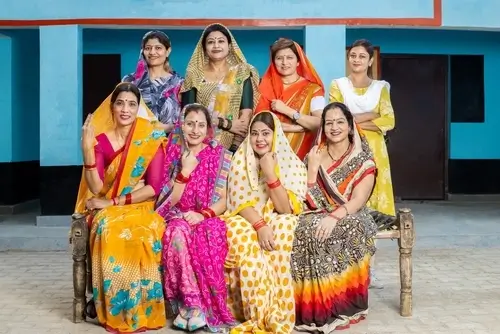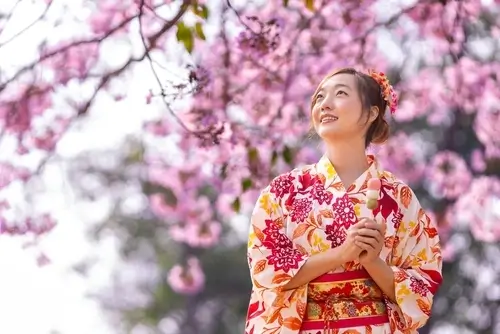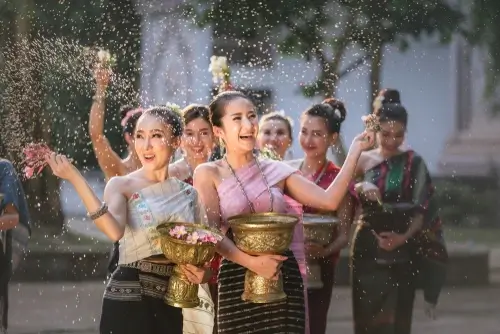Is Asia a place for women?
The situation of women in Asia is complex, stemming from the region's cultural, religious, social, and economic diversity. Comprising over 50 countries and home to over 4.7 billion people (World Bank data, 2022), Asia is characterized by significant differences in the level of gender equality and access to women's rights across countries.
As of 2024, the female population in Asia was approximately 2.318 billion. This means that there were on average 1,045 men for every 1,000 women.
In some Asian countries, such as China and India, there is a significant gender imbalance, to the detriment of women. In China, approximately 119 boys are born for every 100 girls, leading to a male surplus in the population.

Education and literacy
Women's access to education in Asia varies significantly by country. According to a 2021 UNESCO report, the average female literacy rate in Asia was 79%, while in some countries, such as Afghanistan, it was significantly lower (around 29%). In more economically developed countries in the region, such as Japan and South Korea, the female literacy rate was over 99%. Despite progress in access to education in many Asian countries, girls still face obstacles such as child marriage, poverty, and cultural norms that limit their educational opportunities.
Labor market
Women in Asia constitute a significant portion of the workforce, yet they remain underrepresented in government sectors and leadership positions. According to the International Labor Organization, in 2022, the employment rate for women in Asia averaged 47.2%, compared to 73.8% for men. These disparities are particularly pronounced in South Asia, where women face constraints related to social norms, lack of childcare infrastructure, and discrimination in the labor market.
Reproductive health and women's rights
Women's access to healthcare, especially reproductive health care, remains a significant challenge in many parts of Asia. According to the World Health Organization (WHO), the maternal mortality rate in South Asia in 2020 was 163 per 100,000 live births, one of the highest in the world. At the same time, countries like Japan and Singapore have achieved very low maternal mortality rates, below 10 per 100,000 live births. Limited access to contraception and sexual education contributes to high rates of teenage pregnancy, especially in countries like Bangladesh and Nepal.
Violence against women
Violence against women, both in the home and in public spaces, remains a serious social problem in many Asian countries. According to a 2021 UN Women report, approximately 37% of women in South Asia experience physical or sexual violence in their lifetime. Countries like India and Pakistan also face problems with honor-related crimes, as well as forced marriages and domestic violence. While many countries in the region have introduced laws to protect women from violence, enforcement remains a challenge.
Politics and participation in public life
While women's participation in politics in Asia is gradually increasing, it remains relatively low. According to 2022 data from the Inter-Parliamentary Union, women constituted an average of 20.6% of members of parliament in Asia, below the global average of 26.1%. Women are often excluded from decision-making due to patriarchal social norms.
Asia places women in tradition
The traditional role of women in Asia is deeply rooted in cultural, religious, and historical values that have shaped the region's social structures for centuries. Asia, as a continent of immense ethnic and cultural diversity, presents both common and distinct features of traditional gender role perceptions. Women, particularly in patriarchal societies, have often been perceived as guardians of the home, subordinated to men in the familial and public spheres.

Patriarchal system
In many Asian cultures, such as those prevalent in China, India, and Japan, societies were historically based on patriarchal systems. This means that power and privilege were concentrated in the hands of men, while women were responsible for household chores and childrearing. The influence of Confucianism in China and Korea emphasized women's subordination to men and the hierarchy within the family. According to Confucius's teachings, "a woman should be subject to her father before marriage, to her husband during marriage, and to her son after her husband's death"—a principle known as the "Three Obediences."
Religion
Dominant religions in Asia, such as Hinduism, Islam, Buddhism, and Confucianism, have had a significant impact on defining gender roles. In Hinduism, women were traditionally viewed as "guardians of dharma"—responsible for maintaining harmony within the family, but at the same time often subordinate to their husbands. In Islam, women were assigned a specific role in the domestic sphere, in accordance with interpretations of the Quran, which in some regions of Asia led to limited participation in public life. Although Buddhism promoted equality in some contexts, in practice in many Asian societies it did not translate into equal rights for women within social structures.
Customary laws affirming women's traditional roles
- India and the caste system
In India, the traditional caste system (varnas) had a profound impact on women's lives. Women, especially those in the upper castes, were often isolated through the practice of "purdah" (veiling and separation). Research by the National Commission for Women in India (2018) indicates that in many rural communities, women are still excluded from decision-making affecting their families and communities.
- China and the Policy of Filial Piety
The traditional role of women in China was shaped by the Confucian concept of xiaodao (filial piety). Women were seen as the "glue of the family"—responsible for raising children and caring for the elderly. A 2022 World Economic Forum report shows that women still make up less than 25% of management positions in China, reflecting traditional limitations on their access to leadership roles.
- Japan and the "ryosaikenbo" model
In Japan, women's traditional role as "good wives and wise mothers" ( ryosaikenbo ) has been promoted since the Meiji era (1868–1912). OECD research (2021) shows that despite advances in education and employment, women in Japan still perform 85% of the housework, demonstrating the persistence of traditional gender roles.

Modern Women - Asia is Changing
The situation of women in Asia has undergone gradual, yet varied, change over recent decades. Social movements, economic development, globalization, and political interventions have contributed to improving women's rights and position in many Asian countries.
While women in Asia still constitute a minority in politics, their participation is increasing. In 2022, women constituted an average of 20.6% of members of parliament in Asia, up from about 12% in the 1990s.
Famous women in Asian politics
Women in Asian politics have played a significant role in shaping political life in the region, even though patriarchal power structures have dominated many countries on the continent for centuries.
Indira Gandhi (1917–1984) – India
Indira Gandhi was the first woman to serve as Prime Minister of India (1966–1977, 1980–1984) and one of the most influential political leaders of the 20th century. Her policies, described as "authoritarian leadership," included significant economic reforms, such as the nationalization of banks, and the declaration of a state of emergency from 1975 to 1977. Gandhi was a key figure during the 1971 Indo-Pakistani War, which led to the creation of independent Bangladesh. Despite the controversy surrounding her policies, Indira Gandhi remains an icon of Indian politics. She was assassinated in 1984.
Aung San Suu Kyi (born 1945) – Myanmar (Burma)
Aung San Suu Kyi, winner of the 1991 Nobel Peace Prize, was a symbol of the struggle for democracy in Myanmar (Burma). As leader of the National League for Democracy (NLD), she struggled for decades against the repression of the military junta. In 2015, after years of house arrest, the NLD won the parliamentary elections, and Suu Kyi assumed the role of State Counselor (de facto head of government).
Benazir Bhutto (1953–2007) – Pakistan
Benazir Bhutto was the first woman in the world to be elected Prime Minister of a Muslim country. She served in Pakistan twice (1988–1990, 1993–1996). As leader of the Pakistan People's Party (PPP), Bhutto sought to modernize the country and improve the situation of women. She was killed in a bomb attack in 2007.
Tsai Ing-wen (born 1956) – Taiwan
Tsai Ing-wen is the first woman elected president of Taiwan (since 2016). As chairwoman of the Democratic Progressive Party (DPP), Tsai is known for promoting Taiwan's independence from China and progressive social reforms, such as the legalization of same-sex marriage in 2019—the first such law in Asia. Her presidency enjoys high public support, especially amid tensions with China.
Yingluck Shinawatra (born 1967) – Thailand
Yingluck Shinawatra was Thailand's first female prime minister (2011–2014). She was seen as a progressive leader, pursuing social and political reforms. However, her reign ended in a military coup in 2014.
Malala Yousafzai - Pakistan
Malala Yousafzai received the Nobel Peace Prize at the age of 17, making her the youngest laureate in history. She was awarded for her fight for girls' rights to education in Pakistan, particularly in Taliban-controlled regions where girls' education was prohibited. Malala survived an assassination attempt in 2012, and her story and work inspired a global movement for women's education.
Influential Asian women
The lack of education and opportunities for women were among the factors driving emigration from Asia. It was from the homes of those with roots in Asia that influential women were born. These women played significant roles in various spheres of life – politics, culture, science, and activism. Through their achievements and activities, they changed global discourse and inspired subsequent generations.
Kamala Harris (India/Jamaica/USA)
Kamala Harris, the daughter of immigrants from India and Jamaica, is the first woman, first person of South Asian descent, and first Black woman to serve as vice president of the United States. Her success symbolizes progress in the representation of ethnic minorities in US politics.
Yoko Ono (Japan)
Yoko Ono (born February 18, 1933 in Tokyo, Japan) is a Japanese-American conceptual artist, singer, songwriter, and peace activist. She is best known for her work in avant-garde art and her relationship with John Lennon, a member of the legendary band The Beatles. Yoko Ono is considered one of the most controversial and influential figures in the world of art and popular culture.
Priyanka Chopra Jonas (India)
Priyanka Chopra is one of Bollywood's most recognizable actresses, who has also found success in Hollywood. She is a UNICEF ambassador and actively advocates for women's rights and access to education.
Vera Wang (China/USA)
Vera Wang, a Chinese-American designer, revolutionized the bridal industry with her unique wedding gown designs. Her brand has become a symbol of luxury and elegance worldwide.
Naomi Osaka (Japan/Haiti)
Naomi Osaka is a Japanese-Haitian tennis player who has won four Grand Slam titles. She is also a social justice activist, vocally advocating for equality and anti-racism.
Margaret Chan (Hong Kong)
Margaret Chan served as Director-General of the World Health Organization (WHO) from 2006 to 2017. She played a key role in global efforts to combat pandemics, including H1N1 influenza.
Rupi Kaur (India/Canada)
Rupi Kaur, an Indian-born poet and artist, is one of the most influential contemporary writers. Her books, such as Milk and Honey , have achieved enormous popularity, particularly among young women.
A common denominator among influential women of Asian descent is their ability to break down social, cultural, and professional barriers. Their actions—whether in politics, culture, science, or activism—have had and continue to have a profound impact on global discourse, contributing to a more inclusive and equitable world.
The composition is an idea for a post. Asia has always fascinated me. Thanks to it, Orientana cosmetics were created. Having lived in Asia for 20 years, I observed how the role of women changed, and above all, I noticed how attitudes towards me changed.






